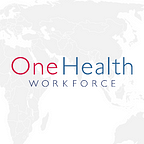Mbarara University of Science and Technology in Uganda Launches the Students One Health Innovations Club
The launch of the Mbarara University of Science and Technology (MUST) Students One Health Innovations Club (SOHIC) brings the total number of SOHICs to 14. The club is the latest to join the OHCEA students’ fraternity.
Launching the club, the Vice Chancellor of Mbarara University of Science and Technology, Professor Celestino Obua, noted that involving the youth and pre-service professionals is one of the most strategic ways of ensuring that things are done differently since the old generation is already bent in a different direction. He emphasised the importance of multi-disciplinary training, noting that the disciplines have different roles in One Health. “Social scientists, for instance, know how to engage communities and are key in entry. The key idea here is for us to learn to recognise the value of each other.”
He noted that the rapid population growth in Uganda is posing real challenges to the ecosystem and this needs to be addressed at policy-making levels.
Professor Obua added that it is a happy feeling to finally be a part of the One Health Central and Eastern Africa (OHCEA) family.
As part of the launch, students organised a symposium on the theme, The Role of Students in One Health: Flagship for a Multi-Disciplinary Approach in African Universities. The keynote speaker was Dr. Gladys Kaleme, the founder of Conservation Through Public Health, a conservation non-profit organization based in Uganda and the USA. Using her experience working with Gorillas, she laboured to demonstrate the inter-dependence between animals, humans and the environment in her address. “Kanyonyi; the Silverback, died after a fight when he fell off a tree and died. By the time he died, he had generated millions of dollars for the Uganda economy through tourism revenue. (A gorilla tracking permit in Uganda costs USD 600 in peak season.) Kanyonyi’s father was respected by the community because of the tourism money he brought in. When he was old and sick, he was protected by the people. When he died, the community organised a ceremony to pay their last respects.”
The award-winning Dr. Kalema pointed out that inter-sectoral collaboration is very helpful with community animal health workers when working with the Village Health Teams at the community level to support national-level taskforces for disease outbreak detection, management, and prevention.
She noted that increased habitation of the gorillas has led to disease outbreaks in the animal as well as human populations. Examples of past outbreaks include scabies in the gorillas from humans.
In terms of future plans and opportunities, she shared information about grants available at National Geographic and research opportunities for students under the various projects at Conservation Through Public Health.
The guest speaker was Professor Samuel Majalija, the Deputy Principal, Makerere University College of Veterinary Medicine, Animal Resources and Biosecurity (CoVAB). He said some of the global health challenges that make the One Health approach even more relevant than ever before include the human population explosion that threatens the habitat of wildlife, global transcontinental travel that makes infectious disease transmission easier and faster than before, challenges with capacity to detect and diagnose diseases timely, food production capacity and the ability to deliver quality food. He noted that while new diseases are emerging, old ones are re-emerging and some are changing sites (Rift Valley Fever used to be associated with Kenya but is now in several countries in the region), the professionals and policymakers in charge do not have the capacity to manage such challenges because they did not receive the necessary training. He, therefore, emphasised the need and importance of innovating and providing more relevant training to the next generation of professionals. Majalija implored the universities and training institutions to take on new training approaches that are multidisciplinary, urged national and sub-national governments and partners to take on new models of pandemic preparedness and move from national level dialogue to frontline management of issues as well as widening the spectrum of public health.
The Dean of Faculty of Medicine at Mbarara University of Science and Technology, Professor Gladys Kiwanuka, thanked OHCEA for welcoming MUST on board. She noted that the university will not drag the network behind since MUST had already anchored its training in community engagement and has a faculty of interdisciplinary studies. “The Faculty of Medicine started off on a community-based education model. It distinguished itself as a medical school to train a medical doctor to serve the community. In terms of One Health, MUST is strategically located; surrounded by farms and bushes. So it can spearhead the mission, vision, and objectives of OHCEA”, she emphasised.
Although Mbarara University of Science and Technology does not have a unit for Veterinary Medicine, she pointed out that while on the wards, students interface with patients who live their daily lives in close contact with their animals (mainly cattle), so ailments observed include zoonotic diseases.
The SOHIC President, Babirye Ruth Grace Kakoba, who is also a fellow on Global Health Africa said there is much the students can do as young people to help manage the global health challenges. She noted that the students’ role in global health — which One Health is part of — can include conducting small research studies on issues within their study environment. “How best can we have affordable technology for health? How can we innovate in this area? We can engage in partnerships and multi-disciplinary collaborations,” she pointed out.
The One Health Central and Eastern Africa (OHCEA) university network is supported by the USAID One Health Workforce project, an initiative to strengthen the capacity of the global health workforce to prevent, detect, and respond to emerging infectious diseases. Follow us on Twitter or Facebook for more information.
